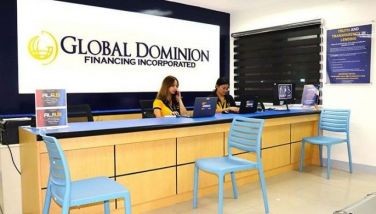A new paradigm: IT and business alignment
SINGAPORE — “From top to bottom line, the IT rules have changed. IT is no longer being on and connected. IT is about helping companies improve return on investment (ROI), keep risks low, profits high.”
Not many know this, of course, and what better way to emphasize this emerging trend than at the opening of the HP Asia-Pacific Enterprise Media Summit ’07 here with Eric Goh, vice president for marketing of HP’s Technology Solutions Group in the Asia-Pacific and Japan, in a video standing on its head, driving home the point that today “IT is no longer a cost but an investment.”
“No,” he said, “I did not wake up on the wrong side of the bed.” And most companies don’t either. But when the paradigm shifts almost overnight, one needs to immediately adjust the looking glass.
If there is any indication that the domains of IT and business are really converging, take the robust investments in IT of companies worldwide.
In a presentation before journalists from the Asia-Pacific, Christopher Mines, senior vice president of Forrester Research Inc., bared that most chief executive officers (CEOs) are satisfied with the overall performance of IT in their firms, with 59 percent of respondents in an online survey saying that they are very satisfied with IT.
India posted the strongest budget growth for IT spending, with CEOs of Indian firms saying they are poised to increase the budget from six percent in 2006 to 61 percent this year. According to Forrester, Indian firms are also finding more funds for new initiatives, saying that 41 percent of their software budget will go to new initiatives.
The HP Media Summit itself also came at the heels of the company’s best quarter to date, earning record revenue in the Asia-Pacific and Japan alone of some $4.5 billion, which represents 18 percent of the company’s performance for the quarter. China, India and Malaysia posted the strongest revenue growth, while the Philippines, Malaysia and Singapore have been delivering above-average performance consistently.
The trend in the region, according to Tom Iannotti, senior vice president and managing director for the Asia-Pacific and Japan, is to grow faster than the market.
However, Mines said, much as the need for IT and its impact on the enterprise are widely acknowledged in the corporate world, expectations are still low on what IT can do to improve business outcomes.
In the same online survey of CEOs, only 28 percent said IT can serve as a source of business innovation, and only 30 percent said it can drive process improvement.
In another survey by Penn, Schoen & Berland Associates, 99 percent of CEOs and 86 percent of chief information officers (CIOs) think technology is integral to the success of their companies, but only 43 percent of CEOs and 35 percent of CIOs think their companies are very successful at aligning technology with business outcomes.
CEOs, according to Mines, do not view IT yet as a source of corporate innovation or business process improvement. The ability of CIOs to improve this perception is hampered by low priority on measuring IT in terms of business results and limited budget capacity for innovation.
What is needed, Mines emphasized, is a new approach to IT governance, specifically one that puts IT at the center of business innovation in the company, increasing the percentage of IT projects directly linked to a business strategic goal, and increasing the number of joint IT-business unit planning meetings.
Running IT like a business
HP considers it a milestone to have had ushered the transition of the corporate mindset to the notion of using technology for better business outcomes “because while it is important to have technology that helps CIOs manage risk and performance, most companies have the technology to produce business outcomes,” Iannotti said.
“A good deal of our focus on technology for better business outcomes is to help companies drive that alignment and to position HP as the company best to help them drive that alignment in their business,” Iannotti added.
In a video message to the summit participants, Ann Livermore, executive vice president of HP’s Technology Solutions Group, said IT is powering over 80 percent of all processes today, whether it is bringing in new employees, taking an order, managing an inventory or doing the financials at the end of the quarter.
“Almost every single process is powered by IT,” she said. “The very simple thing that we wanted to be able to do is to help you manage and transform your IT environment and do that in such a way that it delivers better business outcomes for you.”
This, she said, could be in the area of information management to drive greater sales, reduce cost of doing business or mitigate risks.
“The idea behind business technology optimization is to provide you software to help you with aspects of your business strategy, link them across the IT function and tie them more closely back to business outcomes,” Livermore said.
The HP services portfolio that help deliver business outcomes, according to Som Mittal, senior vice president for HP services in the Asia-Pacific and Japan, includes IT outsourcing, service management, IT shared services, business continuity and availability, IT consolidation, business intelligence, information lifecycle management, and application modernization.
“If you see today, the time span that people have to launch products and new services is really narrow and sometimes the dependency on IT is so robust, that IT should not be a bottleneck but an enabler,” Mittal said.
An example, he said, is the mobile space where competition is so fierce that if IT is not quick to respond, companies will not be able to market products fast enough for competitive advantage. There is also the fact that there are so much data in the business space, IT can play a role in leveraging that data to get products fast moving on the shelf.
“So there is a whole lot of area where you can source business growth and how IT contributes,” he said.
However, Daryl Dickens, head for marketing of HP Software in the Asia-Pacific and Japan, said good IT outcomes do not necessarily equate into good or positive business outcomes. So how does one run IT like a business so that it could deliver business outcomes?
First, Dickens said IT initiatives must be able to deliver increased competitive advantages for the enterprise, there must be improved end-user experience, reduced risks for critical business solutions and lower costs for compliance.
“Fundamentally, the CIO faces two issues. The first one is business value. How can I improve business agility, how can I get the IT business alignment and how can I look at the role of mission-critical applications? Because applications are ultimately the last mile for delivering the business process and services. On the other hand, how do I improve IT efficiency, how do I look at compliance and automation around other areas of the business, and how do I do that amid all the consolidation and centralization that is currently happening in the industry?” Dickens said.
Also important, he said, is how to break down those traditional silos which IT has seen. Where do we invest in IT and why?
The next-generation data center
Inasmuch as companies need IT to deliver business outcomes such as profitability, competitive advantage, ROI and growth, HP’s business transformation program is centered on the concept of accelerating the adoption of the next-generation data center through adaptive infrastructure or the supply chain for delivering IT services.
Lee Choon-Chait, worldwide manager for adaptive infrastructure of HP’s Technology Solutions Group, said their business technology portfolio is built around its own needs as an enterprise.
In 2005, he said HP’s internal challenges were basically the same as other large companies — too many directions, not enough connections. It had, among others, more than 85 data centers in 29 countries, over a hundred IT sites in 53 countries, more than 4,000 applications and almost 1,200 IT projects, but only 30 percent managed by IT. Moreover, only 50 percent of resources’ time was dedicated to innovation.
The infrastructure pain points were also basically the same with other companies — the IT environment was too expensive to manage and maintain, there were simply too many applications, there was a struggle to meet service level agreements for critical workloads, delay in implementing vital projects and compliance demands were increasing across industries.
However, starting this year, HP is moving toward a different direction. It now only has 1,500 applications, 500 IT projects but 100 percent managed by IT. Instead of 85 data centers worldwide, it has six next-generation data centers in three zones, and 80 percent of resources’ time is now dedicated to innovation.
The key word is adaptive infrastructure, which is “24x7 lights-out computing environment (based on standard building blocks and automated using modular software) for establishing the supply chain for IT services.”
Using adaptive infrastructure, HP customers have reported better business outcomes, including 50 percent reduction in operations and maintenance cost, reduced data center space usage by 75 percent and lowered wiring and operational costs by 50 percent, and 24 percent reduction in labor costs but an increase in transactions per week as well as a 550 percent increase in ROI.
Lee said HP will further invest in its customers to help them assess their current data centers and determine how best they could progress to their desired state, encompassing technology, process, people, and governance. This project, dubbed the customer engagement process, is a complementary service meant to add value to HP’s current offerings.
The company has also launched new integrated, ready-to-deploy offerings in the server, storage and software space such as AI for Microsoft Exchange, AI for Oracle, and AI for Sap. “HP is uniquely positioned to deliver adaptive infrastructure,” Lee said.
IT and business are, after all, now collaborative principles.
- Latest





























